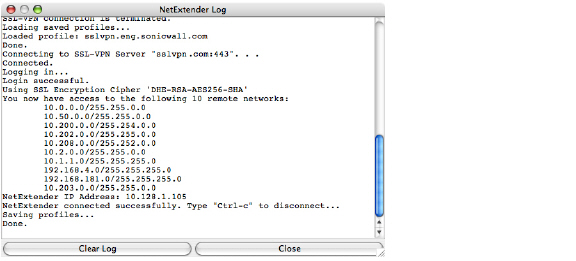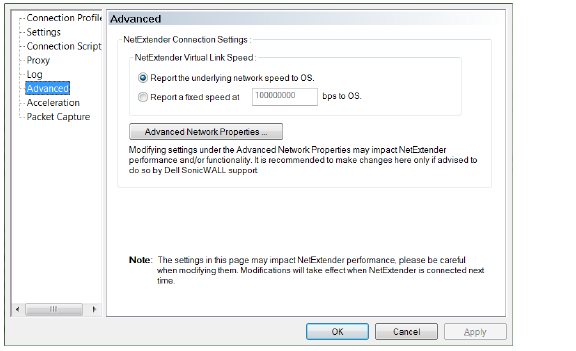
Access rules are needed for the firewall to allow this traffic through.Ĥ. If SSL VPN Users need access to resources on other Zones, such as the DMZ or a Custom Zone, verify or add those Access Rules. NOTE: This does not grant access to all users, individual access is still granted to users based on their VPN access and SSLVPN routes. Access the SSLVPN to LAN rules via the Zone drop-down options or the highlighted matrix button below.ģ. You will need to create Access Rules similar to the image below allowing SSLVPN IPs to access your intended end devices. Add a new User if necessary by using the + Add button.Ģ. On the Groupstab add SSLVPN Services to the Member Of: field.ģ. On the VPN Access tab add the relevant Subnets, Range, or IP Address Address Objects that match what the User needs access to via NetExtender.ĬAUTION: SSL VPN Users will only be able to access resources that match both their VPN Access and Client Routes.Ĥ. Click OK to save these settings and close the window.Ĭhecking Access rule Information for SSLVPN ZoneĢ.
#Dell sonicwall netextender linux how to
This article will cover setting up Local Users, however if you’re interested in using LDAP please reference How to Configure LDAP Authentication for SSL-VPN Users.ġ. Navigate to Users | Local Users & Groups. NetExtender Users may either authenticate as a Local User on the SonicWall or as a member of an appropriate Group through LDAP. Please make sure to set VPN Access appropriately.ħ. The Client Settings tab allows the Administrator to input DNS, WINS, and Suffix information while also controlling the caching of passwords, user names, and the behavior of the NetExtender Client.Ĩ. Input the necessary DNS/WINS information and a DNS Suffix if SSL VPN Users need to find Domain resources by name.ĩ. Enable Create Client Connection Profile – The NetExtender client will create a connection profile recording the SSL VPN Server name, the Domain name and optionally the username and password. The NetExtender client routes are passed to all NetExtender clients and are used to govern which networks and resources remote users can access via the SSL VPN connection.ĬAUTION: All SSL VPN Users can see these routes but without appropriate VPN Access on their User or Group they will not be able to access everything shown in the routes. Click on the Configure button for the Default Device Profile.ĥ. Set the Zone IP V4 as SSLVPN. Set Network Address IP V4 as the Address Object you created earlier ( SSLVPN Range).Ħ. The Client Routes tab allows the Administrator to control what network access SSL VPN Users are allowed.

For NetExtender termination, an Interface should be configured as a LAN, DMZ, WLAN, or a custom Trusted, Public, or Wireless zone, and also configured with the IP Assignment of “Static”.ĥ. Interfaces that are configured with Layer 2 Bridge Mode are not listed in the “SSLVPN Client Address Range” Interface drop-down menu.

This includes Interfaces bridged with a WLAN Interface. on the LAN in this case) and which IPs will be given to connecting clients.ĬAUTION: NetExtender cannot be terminated on an Interface that is paired to another Interface using Layer 2 Bridge Mode. The SSL VPN | Client Settings page allows the administrator to configure the client address range information and NetExtender client settings, the most important being where the SSL-VPN will terminate (e.g. TIP: If you want to be able to manage the firewall via GUI or SSH over SSLVPN these features can be enabled separately here as well.Ĥ. Navigate to the SSL VPN | Client Settings page. NOTE: The Domain is used during the user login process’ Port 443 can only be used if the management port of the firewall is not 443. NOTE: The SSLVPN port will be needed when connecting using Mobile Connect and NetExtender unless the port number is 443.

This indicates that SSL VPN Connections will be allowed on the WAN Zone.ģ. Set the SSL VPN Port, and Domain as desired.

Creating an Address Object for the SSLVPN IPv4 Address Range


 0 kommentar(er)
0 kommentar(er)
